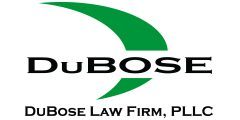The USS Bennington (CV-20) was ordered for the U.S. Navy on December 15, 1941. Her keel was laid down a year later at Brooklyn Navy Yard on December 15, 1942. She was launched on February 28, 1944 and commissioned on August 6, 1944 under the command of J.B. Sykes.
USS Bennington joined Task Group 58.1 on February 8, 1945. She operated out of Ulithi to carry out air strikes on the Japanese home islands, the Volcano Islands, and Okinawa. She supported the invasion of Okinawa from March until June. On April 7, her aircraft participated in the attacks on Japanese forces in the East China Sea, sinking the Japanese battleship Yamato, the light cruiser Yahagi, and four destroyers.
A typhoon off the coast of Okinawa damaged the USS Bennington on June 5. She headed to Leyte for repairs on June 12. After repair work was completed, she spent July and August conducting air raids on the Japanese home islands.
After World War II ended, the USS Bennington supported the occupation of Japan until October 21, 1945. Her aircraft flew over Tokyo during the surrender ceremony on September 2. When she returned to Norfolk, she was decommissioned on November 8, 1946.
USS Bennington was modernized at New York Naval Shipyard and recommissioned as CVA-20 on November 13, 1952 under the command of Captain David B. Young. Her conversion was extensive, and at the re-commissioning ceremony, Rear Admiral R.H. Hillenkoeter called her “the most modern carrier in our fleet today.”
After training and carrier qualifications, the USS Bennington headed to Norfolk for her final fleet preparations. An accident on April 27, 1953 caused an explosion in Boiler Room One that killed 11 men and seriously injured four others.
The USS Bennington operated off the eastern seaboard from May 1953 to May 1954. On May 26, 1954, an explosion of fluid in one of her catapults set off a serious of secondary explosions that killed 103 men and injured 201 others. She brought the injured men to Quonset Point before heading to New York Naval Shipyard for repairs, where she was completely rebuilt.
The Secretary of the Navy boarded USS Bennington on April 22, 1955 to present medals and letters of commendation to 178 crewmen for their heroism when the explosions occurred the previous year. Later that year, she joined the Pacific Fleet to make two cruises to the Far East.
USS Bennington was docked in Sydney for Coral Sea Day celebrations on May 7, 1957. She was boarded by 10 students from the University of Sydney who were dressed as pirates. The students solicited donations for a local charity before announcing, “Now hear this! The USS Bennington has been captured by Sydney University pirates!” Alarms were sounded for general quarters, chemical, and atomic attacks, which roused the crewmen from their bunks. The students were escorted off the ship by Marines, and no charges were filed.
The USS Bennington was redesignated as an ASW support carrier, CVS-20, on June 30, 1959. She was present for the Laotian Crisis of 1060 and served three tours of duty during the Vietnam War. The carrier recovered the Apollo 4 capsule when it splashed down on November 9, 1967. She was decommissioned on January 15, 1970, removed from the Naval Vessel Register on September 20, 1989, and sold for scrap on January 12, 1994.
Like other ships from the World War II era, the USS Bennington was constructed with many asbestos-containing components. The toxic substance asbestos was prized for its fireproofing properties and its resistance to water, heat, and corrosion. It was used in virtually all areas of the ship, as well as in the aircraft she carrier. Anyone who served on the USS Bennington or was involved in her repair and modernization was put at risk for developing asbestos-related illnesses like asbestosis, lung cancer, and mesothelioma, a rare but deadly form of cancer that attacks the protective lining that surrounds the lungs and other organs.
USS Bennington workers should monitor their health carefully, and consult a doctor if they experience any symptoms associated with mesothelioma. Anyone who worked on or around the USS Bennington, and is diagnosed with mesothelioma, should also consider contacting a lawyer to discuss their legal rights.
